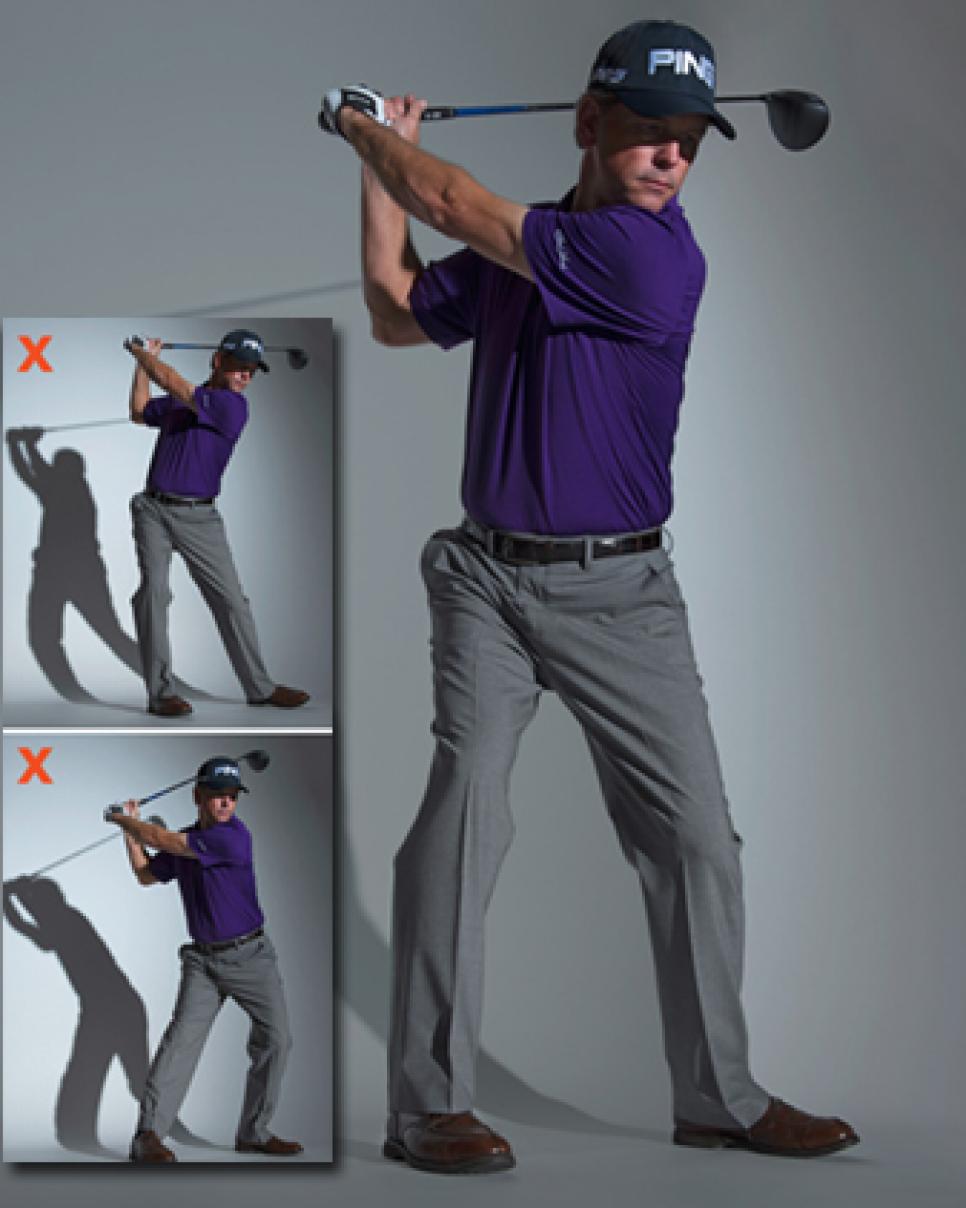Driving
Load + Explode
To rip driver off the tee, you have to load your body on the backswing and unload it on the downswing. Most golfers think of loading as simply making a big shoulder turn, but the lower body is just as important—and it doesn't get much love. I see two faults on the backswing that prevent the lower body from loading and storing power effectively. One is common among higher handicappers, and the other tends to be a better player's fault. If you have one of these, you won't hit the ball consistently solid, and you won't come close to driving it as far as you can. Let's take a look.

1. TURN INTO YOUR
RIGHT LEG
If you start from a good setup, with your spine tilted slightly away from the target, and swing your arms back, you'll feel pressure building on the inside of your back leg. You need to maintain that pressure as you turn your upper body over your back foot (right). Think of a baseball pitcher: He loads into his back foot so he can explode forward.
The high-handicapper mistake is to slide the hips away from the target so the lower part of the spine shifts back. This causes the upper spine to tip toward the target (right, top inset). There's not much turn in that backswing.
The better player tends to over-rotate the right hip on the backswing, which causes the right leg to straighten and the upper body to tilt away from the target too much (bottom inset). Both faults prevent a powerful coiling action against a stable lower body, leading to weak downswings.

2. LET YOUR LEFT SIDE LEAD
Think of the pitcher again: It's the step with the front leg that drives the forward motion and literally pulls him off the mound. Same with the golf swing: The left knee pulls away from the right knee, and the left hip turns toward the target (right). That move initiates a powerful downswing, and it's possible only if the body has coiled into the inside of the right leg on the backswing.
Back to our two faults. Players who are tipped toward the target typically make a steep downswing and cut across the ball from out to in, hitting pop-ups or slices. Players who over-rotate the hips going back tend to fire their hips aggressively coming down, which causes the club to drop behind the body and makes the swing too inside-out. Result: drop-kicks, blocks or hooks.
Turning into the right leg on the backswing allows you to release your left side toward the target as you start back to the ball. That keeps the club tracking on a good path to impact, with the left side pulling the right side. That's how you maximize power.
Todd Anderson, T-14 on Golf Digest's 50 Best Teachers, is director of instruction at the PGA Tour Performance Center at TPC Sawgrass, Ponte Vedra Beach.

.jpg)